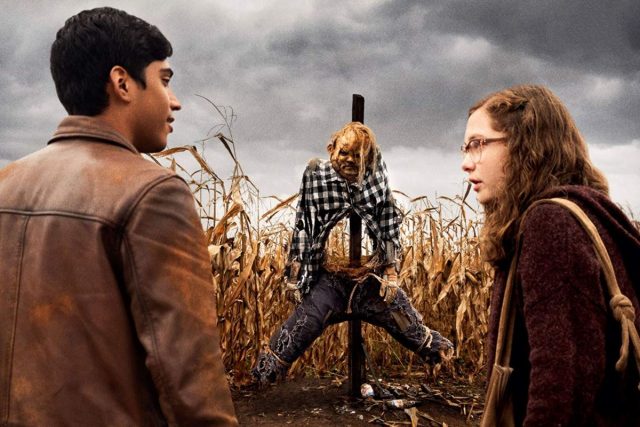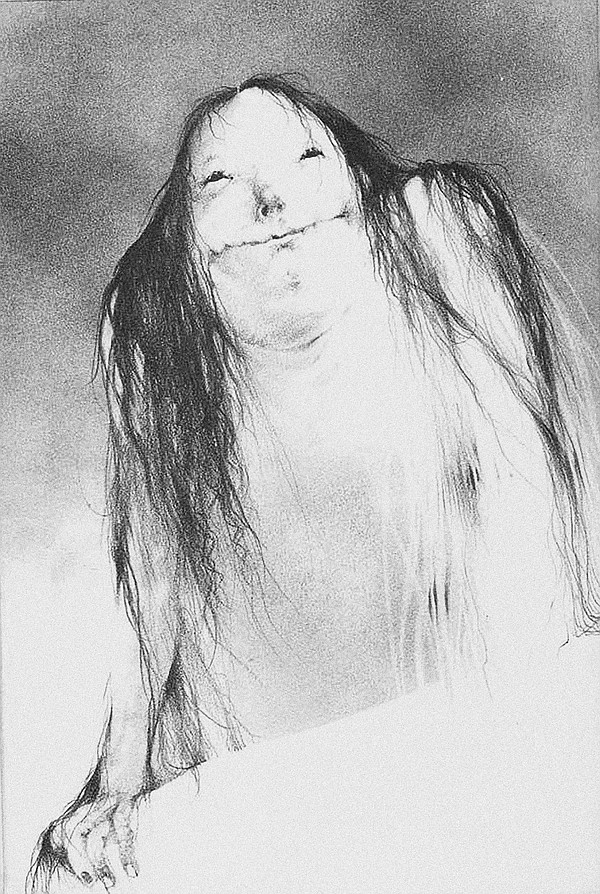Scary Stories to Tell in the Dark Is Too Light On The Fright

Which is more difficult: making a horror movie for tweens, or one based on a series of short, terrifying vignettes largely drawn from traditional folk stories and urban myths?
Scary Stories to Tell in the Dark does its best to pull off both. It mostly succeeds, largely on the talent and charisma of the lead actress along with some very creepy character design. In lieu of creatively weaving together more of the macabre short stories that made the books both beloved and often banned from libraries, we get a generic story about high school outcasts, a haunted house, and a gothic book full of, well, scary stories.
For horror movie veterans who’ve seen countless jump scares, Vengeful Spirits, and Final Girls, Scary Stories is lightweight genre fare; formulaic fun, full of nods to storylines and visuals from better, scarier movies. For tweens whose exposure to things that go bump in the night is limited to The Haunted Mansion or the Goosebumps movie, Scary Stories is a dark, creepy ride where the monsters aren’t always the scarecrows with the bug-filled leather head.
Mill Valley, PA in 1968 is an idyllic slice of Americana, full of varsity athletes and high school misfits, Nixon election coverage and racist cops. Aspiring horror writer and awkward teen Stella (Zoe Margaret Colletti) is roped into a plan, involving petty revenge on local bullies for years of Halloween torment, by her friends, neurotic goofball Chuck (Austin Zajur) and bashful-but-horny rich-kid Auggie (Gabriel Rush). When their target, Big Man on Campus Tommy (Austin Abrams), chases them into a drive-in, they jump into a car to hide, where they meet Ramon (Michael Garza), a young Hispanic man with a secret and the town sheriff eyeing him for the crime of not being white.

In search of true Halloween scares, the newly-minted foursome visits the Bellows House, a deserted mansion that looms large in town legends. They find the hidden room where the Bellows family kept their daughter Sarah locked away with her terrible, dark secrets. Stella just happens to pull down the book of scary stories Sarah wrote in blood-red ink. When she opens it, a blank page begins filling with writing, in the same blood-red ink, telling a story about a scarecrow named Harold and a boy named Tommy. When Tommy goes missing the next day, Stella begins to suspect the book may have dark power. Over the next several days, she witnesses stories about her friends being written on blank pages in the same blood-red ink. Will Stella solve the mystery of the book and save her friends?
A mysterious, self-scribing book that magically writes the fate of its characters is a reasonably clever way to stitch together the disparate stories cherry-picked from the books. Director André Øvredal, best known for his clever Trollhunter, keeps up the tension with dramatic lighting and sinister music. He doesn’t rely on jump scares to frighten the audience. He also follows Steven Spielberg’s “don’t show the monster too soon” rule; terrifying creatures are shown sparingly after a tense lead-up their appearance. He uses practical effects throughout the film, giving most of the monsters and scenery a genuine look often missing from CGI-heavy films.
If only the same care had been given to the characters. Stella is the most fully-realized person, whose quirks and fears seem natural rather than mandated by the script. Most of the supporting characters, on the other hand, are sketches of people; broad caricatures of the high school bully, the class goofball, the beauty queen, the vindictive parent. Tommy in particular is a painful stereotype of the exaggerated, over-the-top high school star athlete/bully.
Scary Stories is also weighed down with cliches. It relies on heavily used horror tropes: a self-writing magical book, a haunted house where a family imprisoned a daughter with embarrassing secrets, a terrifying scarecrow come to life. The dialog is similarly clunky, typical of middling horror and scream-queen B-movies. The musical score is filled with the same deep brass and screechy violins of a hundred scary movies, timed to let the audience know what’s coming next. By setting the story in 1968, it leans into nostalgic, late ’60s cliches. What better way to telegraph “Welcome to Nixon-era small town America” than opening with a montage of vintage ’60s Americana, accompanied by a track from the Standard Hollywood Vietnam-Era Song List; in this case, Donovan’s Halloween-tinged Season of the Witch rather than the expected Creedence Clearwater Revival track.
The biggest problem with Scary Stories is how Øvredal and producer Guillermo del Toro neuter it, delivering a generic “high-school kids visit a haunted house” movie suitable for its intended tween audience. The source material, written in the early ’80s by Alvin Schwartz with gruesome illustrations by Stephen Gammell, is truly menacing: full of dark, disturbing imagery and brutal violence, told in short sketches of story. That type of writing doesn’t naturally lend itself to a typical feature-length film, and the nods to the books feel forced. Scary Stories would have been more engaging and far scarier if Øvredal and del Toro had filmed an anthology of individual stories more closely based on the books.
Whether you enjoy Scary Stories to Tell in the Dark depends on your viewpoint and experience with horror movies. One person’s cliched trope is another person’s terrifying scene.
Scary Stories to Tell in the Dark (1212 Entertainment, PG-13, 1hr 51mins) gets a C+



